Upper Midwest Environmental Sciences Center
Loon Migrations, 1998
| This page is an alternative format to the Flash file which presents
this content in a dynamic and interactive interface. |
Biologists are attempting to learn more about the fall migrations of the common loon. By implanting radio transmitters in adult loons, scientists are able to gain important information about migration routes, staging areas, and the locations of wintering grounds. |
 |
Flight paths of the six loons |
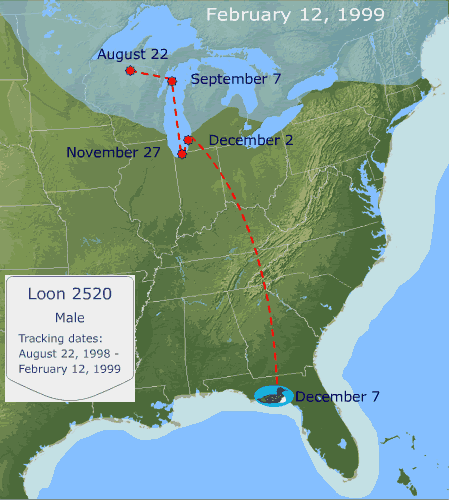 |
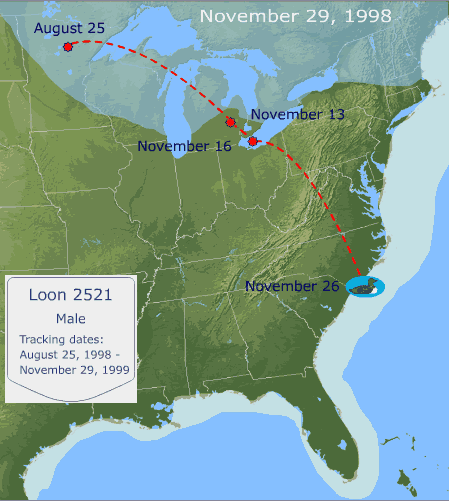 |
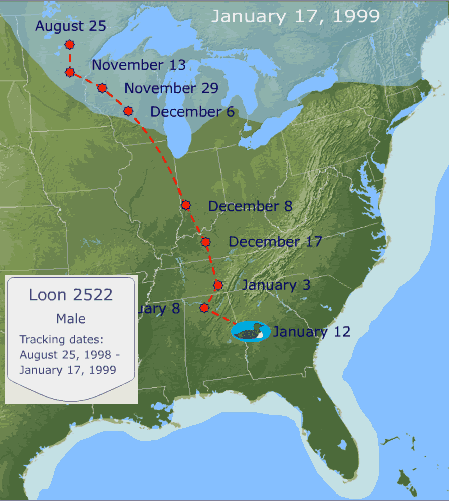 |
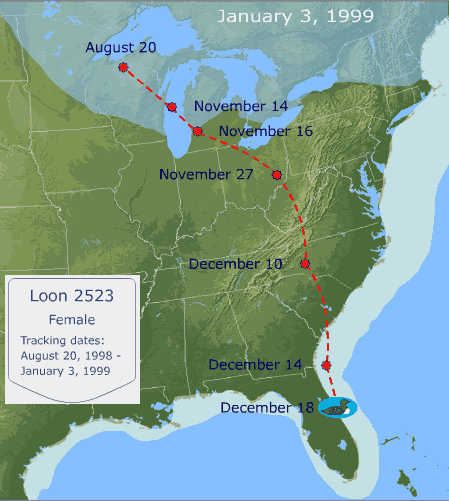 |
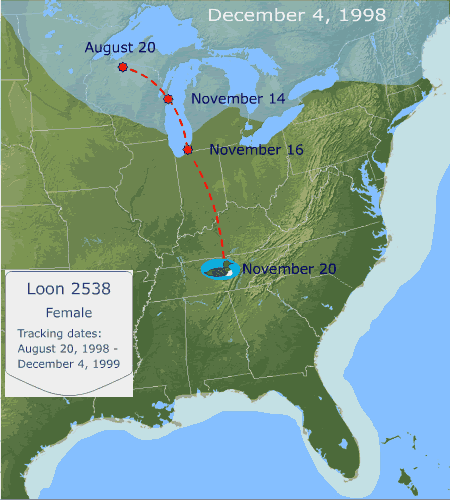 |
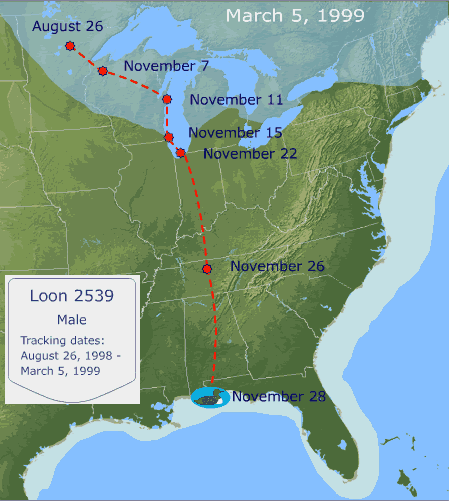 |
Why is this study important? More information is needed about the movements and habitat requirements of common loons. Knowledge of autumn movement patterns, staging, migration routes, and wintering areas of common loons that breed in the upper Midwest enhances the ability of state and federal agencies to develop effective regional and national conservation strategies. |
 |
Staging on the Great Lakes Previous studies have shown that loons migrate through Lake Michigan from north to south in November and December. Results from this study show the importance of the Great Lakes as staging habitat for loons during the fall migration. 4 of 6 loons staged on Lake Michigan, and another staged on Lake Erie. |
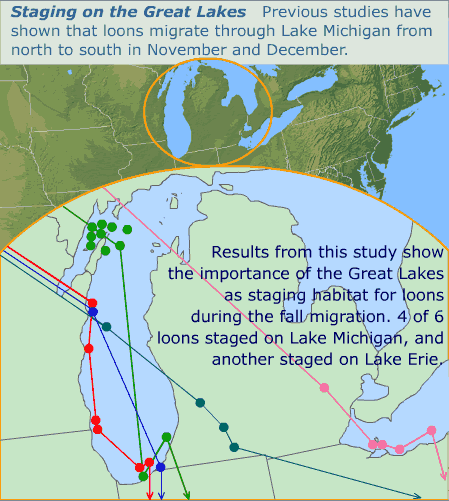 |
Two Routes Results from the study indicate that common loon migrations from the North Central United States follow two or more distinct routes:
Study data reflects the importance of inland waters in the southeastern U.S. during migration. Loons were recorded on lakes in Indiana, Ohio, Kentucky, Tennessee, North Carolina, and Alabama. |
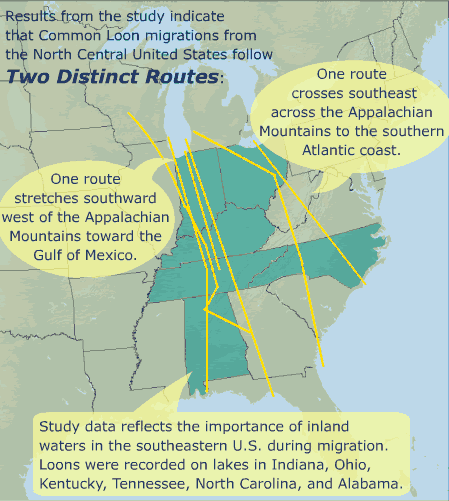 |
The Impact of Weather Large movements of birds in the autumn often occur after a low pressure system has passed through and high pressure is moving in, accompanied by strong winds from the northwest. |
 |
Summary The success of the methods used in this study has led to additional research employing satellite telemetry to track common loon movements. Biologists with the Upper Midwest Environmental Sciences Center (UMESC), the Wisconsin Department of Natural Resources, the Minnesota Department of Natural Resources, and BioDiversity Research Institute have worked on this project. The research described in these graphics was published in |
 |
Alternative content:
|
 |
Page Last Modified: April 3, 2018
